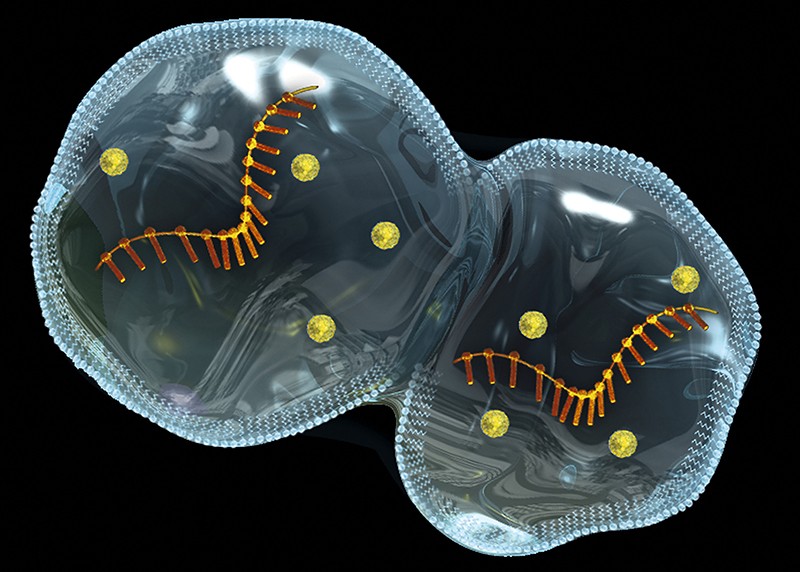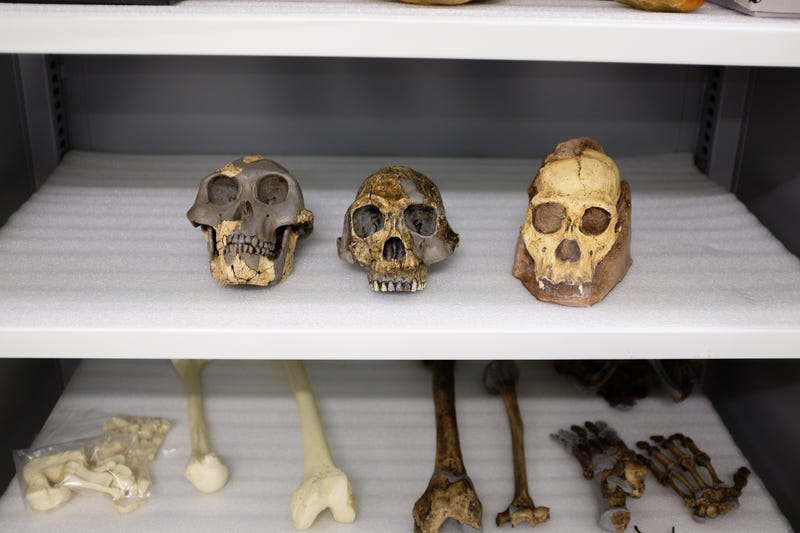Giving up Darwin
By: David Gelernter
Posted: May 1, 2019
This article appeared in: Volume XIX, Number 2, Spring 2019
Darwinian evolution is a brilliant and beautiful scientific theory. Once it was a daring guess. Today it is basic to the credo that defines the modern worldview. Accepting the theory as settled truth—no more subject to debate than the earth being round or the sky blue or force being mass times acceleration—certifies that you are devoutly orthodox in your scientific views; which in turn is an essential first step towards being taken seriously in any part of modern intellectual life. But what if Darwin was wrong?
Like so many others, I grew up with Darwin’s theory, and had always believed it was true. I had heard doubts over the years from well-informed, sometimes brilliant people, but I had my hands full cultivating my garden, and it was easier to let biology take care of itself. But in recent years, reading and discussion have shut that road down for good.
This is sad. It is no victory of any sort for religion. It is a defeat for human ingenuity. It means one less beautiful idea in our world, and one more hugely difficult and important problem back on mankind’s to-do list. But we each need to make our peace with the facts, and not try to make life on earth simpler than it really is.
Charles Darwin explained monumental change by making one basic assumption—all life-forms descend from a common ancestor—and adding two simple processes anyone can understand: random, heritable variation and natural selection. Out of these simple ingredients, conceived to be operating blindly over hundreds of millions of years, he conjured up change that seems like the deliberate unfolding of a grand plan, designed and carried out with superhuman genius. Could nature really have pulled out of its hat the invention of life, of increasingly sophisticated life-forms and, ultimately, the unique-in-the-cosmos (so far as we know) human mind—given no strategy but trial and error? The mindless accumulation of small changes? It is an astounding idea. Yet Darwin’s brilliant and lovely theory explains how it could have happened.
Its beauty is important. Beauty is often a telltale sign of truth. Beauty is our guide to the intellectual universe—walking beside us through the uncharted wilderness, pointing us in the right direction, keeping us on track—most of the time.
Demolishing a Worldview
There’s no reason to doubt that Darwin successfully explained the small adjustments by which an organism adapts to local circumstances: changes to fur density or wing style or beak shape. Yet there are many reasons to doubt whether he can answer the hard questions and explain the big picture—not the fine-tuning of existing species but the emergence of new ones. The origin of species is exactly what Darwin cannot explain.
Stephen Meyer’s thoughtful and meticulous Darwin’s Doubt (2013) convinced me that Darwin has failed. He cannot answer the big question. Two other books are also essential: The Deniable Darwin and Other Essays (2009), by David Berlinski, and Debating Darwin’s Doubt (2015), an anthology edited by David Klinghoffer, which collects some of the arguments Meyer’s book stirred up. These three form a fateful battle group that most people would rather ignore. Bringing to bear the work of many dozen scientists over many decades, Meyer, who after a stint as a geophysicist in Dallas earned a Ph.D. in History and Philosophy of Science from Cambridge and now directs the Discovery Institute’s Center for Science and Culture, disassembles the theory of evolution piece by piece. Darwin’s Doubt is one of the most important books in a generation. Few open-minded people will finish it with their faith in Darwin intact.
Meyer doesn’t only demolish Darwin; he defends a replacement theory, intelligent design (I.D.). Although I can’t accept intelligent design as Meyer presents it, he does show that it is a plain case of the emperor’s new clothes: it says aloud what anyone who ponders biology must think, at some point, while sifting possible answers to hard questions. Intelligent design as Meyer explains it never uses religious arguments, draws religious conclusions, or refers to religion in any way. It does underline an obvious but important truth: Darwin’s mission was exactly to explain the flagrant appearance of design in nature.
The religion is all on the other side. Meyer and other proponents of I.D. are the dispassionate intellectuals making orderly scientific arguments. Some I.D.-haters have shown themselves willing to use any argument—fair or not, true or not, ad hominem or not—to keep this dangerous idea locked in a box forever. They remind us of the extent to which Darwinism is no longer just a scientific theory but the basis of a worldview, and an emergency replacement religion for the many troubled souls who need one.
As for Biblical religion, it forces its way into the discussion although Meyer didn’t invite it, and neither did Darwin. Some have always been bothered by the harm Darwin is said to have done religion. His theory has been thought by some naïfs (fundamentalists as well as intellectuals) to have shown or alleged that the Bible is wrong, and Judeo-Christian religion bunk. But this view assumes a childishly primitive reading of Scripture. Anyone can see that there are two different creation stories in Genesis, one based on seven days, the other on the Garden of Eden. When the Bible gives us two different versions of one story, it stands to reason that the facts on which they disagree are without basic religious significance. The facts on which they agree are the ones that matter: God created the universe, and put man there for a reason. Darwin has nothing to say on these or any other key religious issues.
Fundamentalists and intellectuals might go on arguing these things forever. But normal people will want to come to grips with Meyer and the downfall of a beautiful idea. I will mention several of his arguments, one of them in (just a bit of) detail. This is one of the most important intellectual issues of modern times, and every thinking person has the right and duty to judge for himself.
Looking for Evidence
Darwin himself had reservations about his theory, shared by some of the most important biologists of his time. And the problems that worried him have only grown more substantial over the decades. In the famous “Cambrian explosion” of around half a billion years ago, a striking variety of new organisms—including the first-ever animals—pop up suddenly in the fossil record over a mere 70-odd million years. This great outburst followed many hundreds of millions of years of slow growth and scanty fossils, mainly of single-celled organisms, dating back to the origins of life roughly three and half billion years ago.
Darwin’s theory predicts that new life forms evolve gradually from old ones in a constantly branching, spreading tree of life. Those brave new Cambrian creatures must therefore have had Precambrian predecessors, similar but not quite as fancy and sophisticated. They could not have all blown out suddenly, like a bunch of geysers. Each must have had a closely related predecessor, which must have had its own predecessors: Darwinian evolution is gradual, step-by-step. All those predecessors must have come together, further back, into a series of branches leading down to the (long ago) trunk.
But those predecessors of the Cambrian creatures are missing. Darwin himself was disturbed by their absence from the fossil record. He believed they would turn up eventually. Some of his contemporaries (such as the eminent Harvard biologist Louis Agassiz) held that the fossil record was clear enough already, and showed that Darwin’s theory was wrong. Perhaps only a few sites had been searched for fossils, but they had been searched straight down. The Cambrian explosion had been unearthed, and beneath those Cambrian creatures their Precambrian predecessors should have been waiting—and weren’t. In fact, the fossil record as a whole lacked the upward-branching structure Darwin predicted.
The trunk was supposed to branch into many different species, each species giving rise to many genera, and towards the top of the tree you would find so much diversity that you could distinguish separate phyla—the large divisions (sponges, mosses, mollusks, chordates, and so on) that comprise the kingdoms of animals, plants, and several others—take your pick. But, as Berlinski points out, the fossil record shows the opposite: “representatives of separate phyla appearing first followed by lower-level diversification on those basic themes.” In general, “most species enter the evolutionary order fully formed and then depart unchanged.” The incremental development of new species is largely not there. Those missing pre-Cambrian organisms have still not turned up. (Although fossils are subject to interpretation, and some biologists place pre-Cambrian life-forms closer than others to the new-fangled Cambrian creatures.)
Some researchers have guessed that those missing Precambrian precursors were too small or too soft-bodied to have made good fossils. Meyer notes that fossil traces of ancient bacteria and single-celled algae have been discovered: smallness per se doesn’t mean that an organism can’t leave fossil traces—although the existence of fossils depends on the surroundings in which the organism lived, and the history of the relevant rock during the ages since it died. The story is similar for soft-bodied organisms. Hard-bodied forms are more likely to be fossilized than soft-bodied ones, but many fossils of soft-bodied organisms and body parts do exist. Precambrian fossil deposits have been discovered in which tiny, soft-bodied embryo sponges are preserved—but no predecessors to the celebrity organisms of the Cambrian explosion.
This sort of negative evidence can’t ever be conclusive. But the ever-expanding fossil archives don’t look good for Darwin, who made clear and concrete predictions that have (so far) been falsified—according to many reputable paleontologists, anyway. When does the clock run out on those predictions? Never. But any thoughtful person must ask himself whether scientists today are looking for evidence that bears on Darwin, or looking to explain away evidence that contradicts him. There are some of each. Scientists are only human, and their thinking (like everyone else’s) is colored by emotion.
...

















